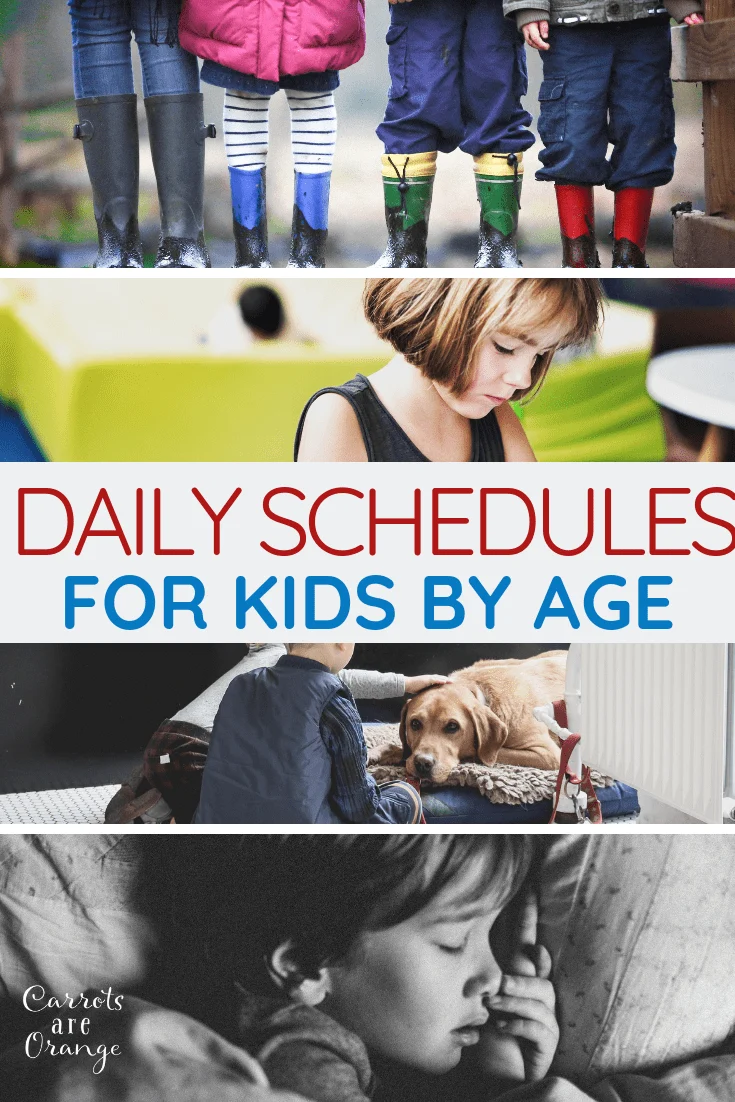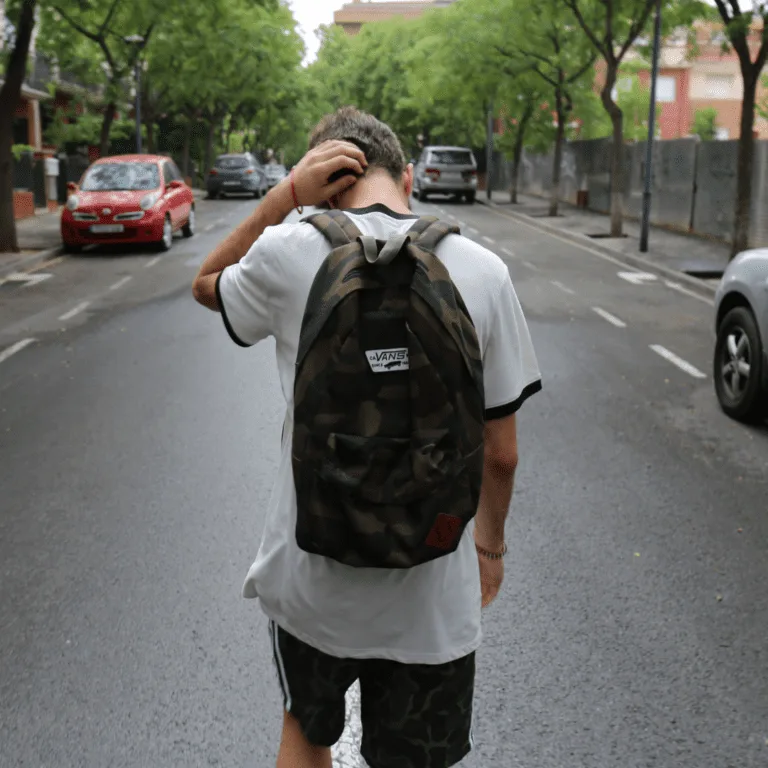Time is one of life’s most precious resources. If you waste an hour, you can’t get it back for any amount of money. That’s why teaching your kids priceless time management and organizational skills early and often are top priorities. Accomplishing this is hard if you divide your time between multiple children and a job outside of the home.
Routine and chore charts help you to quickly set expectations for your kids regarding their personal activities, school work, and household chores. These activity charts for kids feature simple designs that are engaging enough to spark interest in even your most jaded teen. Don’t waste a second. Dive right into these daily schedules for kids' ideas!

Daily Schedule for Kids – Age by Age
Toddlers (Ages 1-3 years old)
Morning routine charts save the day for parents who have toddlers. Your routine charts, however, should include both morning and evening activities to get your little ones happily moving in the right direction.
Related Read: The Secret to Positive Discipline – Why Time Outs Aren't Enough
Morning Routine for Toddlers
This picture-based chart uses plenty of colors to guide your toddler through his or her day. The title shows a bright, yellow sun that your child will associate with day time and waking up in the morning. Personalize the chart by putting your toddler’s name in the title. Since your toddler’s activities are relatively limited, this chart shows a short list of tasks using fun graphics.
- Go potty
- Make the bed
- Get dressed
- Eat breakfast
- Brush teeth
- Comb hair
Graphics of a potty, a cartoon character making its bed, some clothing, some plated food, a toothbrush, and a comb let your toddler know the sequence of events in his or her morning. Whether you use pictures that you snapped from your smartphone or computer-generated clip art, associate the visuals with words. This gets your child ready for reading later.
Evening Routine for Toddlers
Easy-to-understand visuals also dominate the child’s evening schedule chart. The title shows a crescent moon and stars, which signals bedtime for your toddler. These activities and their associated pictures are included in the chart.
- Pick up toys
- Go potty
- Brush teeth
- Put laundry in the hamper
- Get bath
- Put on pajamas
- Storytime
Related Resource: The 7 Most Beautiful & Easy to Use Toddler Bedtime Routine Charts
Customize the morning and evening charts with Velcro tabs and fabric. Cut out yellow stars and green dots from pieces of felt from your local fabric store. Place them in a small pouch that you can hang from a thumbtack.
Let your child press a green dot next to tasks as he or she finishes them. If your toddler does a particularly good job on an activity, praise him or her by pressing a yellow star near the task. This will keep your little one engaged and motivated.

Daily Schedule for Preschoolers (Ages 4-5yrs)
Preschoolers are known for their growing independence and their willingness to help around the house. With this daily schedule for kids, you’ll encourage them to be creative while they learn life skills.
Morning Routine for Preschoolers
Have your child create his or her own activity chart with your help. In this chart, morning tasks are a mix of routine activities and age-appropriate household chores.
Here are some example activities:
- Use bathroom
- Brush teeth
- Wash face
- Make bed
- Get dressed
- Eat breakfast
- Pack school bag
Related Read: 12 Tips for a Smoother Morning Routine for You & Your Kids
Evening Routine for Preschoolers
Here are some examples of evening routines:
- Pick up toys
- Dust or tidy up
- Set the dinner table
- Brush teeth
- Bathe
- Put away laundry
- Pull on pajamas
- Read story
While your child is likely capable of accomplishing these tasks without constant help from you, he or she often gets sidetracked. This activity chart consists of a sturdy poster board that has Velcro tabs and colorful cards for each activity. Print out pre-scripted cards from the internet, or you can make your own from scratch. Work out the ideal numbered sequence of tasks with your child; put the tasks’ numbers on the back of the cards.
When your child finishes a task that’s in his or her stack of cards, he or she will stick the card on the activity board’s Velcro tab. Getting chores done becomes a game. If your child doesn’t remember what he or she needs to do next, refer them to their cards.
If this sound daunting to you, check out these printable morning & evening routine cards!
Ideas for Implementing Chores with Preschoolers
Allow Your Child to Take Ownership
Years ago, a friend of mine wished to introduce chores to her 3.5 year old. So, she bought a cute chore chart for visual learning. I had thought a lot about this topic so I was curious about her approach.
She asked her daughter to explain the chart to me. Brilliant. She allowed her daughter to take ownership of the experience. As a result, she described her first chore with enthusiasm and pride. So that – “her first chore” – brings me to my next point.
Introduce Chores Slowly & Intentionally
My friend opted to start slowly by introducing chores thoughtfully. In other words, the first chores might not only become ingrained in her daughter's learning but chores that also have more than one meaning (e.g. chore = reward).
For example, her daughter's first chore was the compost bin, which I think is so smart. Her daughter learns about earning life's precious “things” through hard work but she also learns about preparing food and science.
What opportunity to teach and to learn!

Grade Schoolers (Ages 6-12yrs)
As kids enter grade school, they have more classroom work and less of a desire to help around the house. To keep them organized and useful at home, you’ll need more than morning routine charts with Velcro stars and creative card tricks. This activity chart shows a typical daily schedule for kids who are between 6 and 12 years old, and it has a hook to keep them engaged in their work.
Morning Routine for Elementary
Here are some sample morning tasks.
- Make bed
- Brush teeth
- Wash face
- Get dressed
- Eat breakfast
- Pick up packed lunch & snack
- Get school backpack
Evening Routine for Elementary
Here are some sample evening tasks.
- Do homework
- Eat dinner
- Load dishwasher
- Take out trash
- Help prepare lunch box
- Pack school bag
- Set aside school clothes
- Bathe
- Put on pajamas
- Read or quiet time
- Lights Out
This schedule board needs a sturdier surface than the previous charts. Use a cork bulletin board to hold printed tasks that are individually held in place by Velcro tabs. Since your child has more schoolwork and limited time, it’s important to associate each task with a time reference. You and your child decide when those activities and chores need to be done and create time cards for each task.
An Idea for a Routine Chart for Elementary Kids
- Attach small plastic cups with Velcro next to each activity.
- Fill a small sack with marbles.
- Hang the sack by a tack from the bulletin board.
As your child finishes each activity on time, he or she puts a marble in the cup. You count the marbles daily. If the child reaches a certain amount of marbles at a week’s end, he or she gets a special reward such as a game app, ice cream treat, or a day of no chores.

Teens (Ages 13-18yrs)
Opportunities to shape your child’s time and money management abilities abound when your kid becomes a teenager. While most charts for kids feature physical boards only, this example activity chart goes digital.
Morning Routine for Teens
Example morning activities and age-appropriate housework for teens.
- Make bed
- Shower and groom
- Make breakfast and eat
- Pick up lunch
- Get school backpack
Evening Routine for Teens
Sample evening routine and chores for teens.
- Do homework
- Participate in sports
- Shower
- Help prepare dinner
- Eat
- Vacuum or tidy up
- Do laundry
- Set aside school clothes
- Pack school lunch
- Gather books into a backpack
An Idea for a Routine & Chore Chart for Teenagers
The schedule and activity list for teens should include lists of chores that can be switched out and modified as your family’s needs change. Include a QR code on the poster board so that your child can sync work activities on the physical board with extra instructions about chores on his or her smartphone.
Have your child send a notification when he or she completes tasks. If your teen completed each activity in a timely and effective manner, load a prepaid Visa debit card with the teen’s allowance money. When activities are not done properly, deduct a percentage from his or her allowance.

